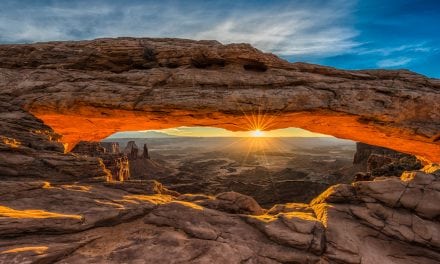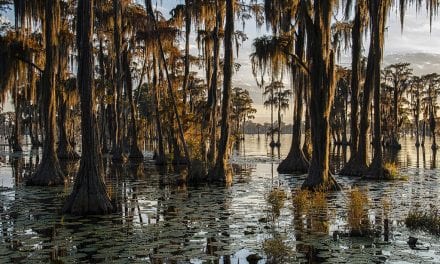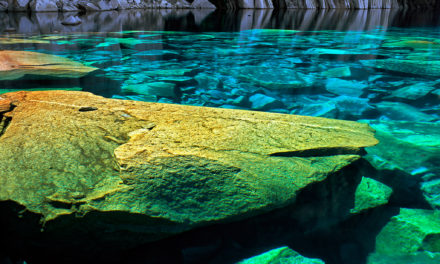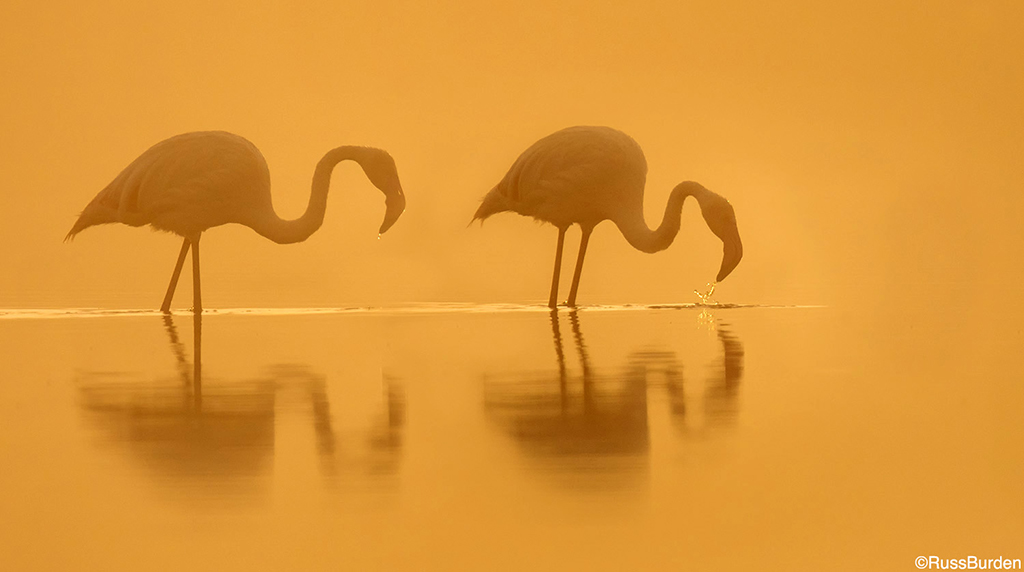
Mist, fog, dramatic light, moody, mysterious: These are conditions under which I’d make photos until my final shutter click. I’d never tire of the process. Conditions change by the second, every moment is breathtaking and every new instance provides new images. What makes these conditions so special is they’re not the norm. When they’re encountered, every unfolding second is unique. The images are made in conditions that stop viewers of your photos in their tracks because they’re one of a kind. So when they occur, be ready, be prepared and get excited.
I also love the challenge of wildlife photography. So much needs to fall into place to obtain an outstanding photo. Simply going to a location and hoping for good light isn’t enough. Mix in the rarity of misty, moody and dramatic light, and the odds of being granted a great wildlife photo don’t often happen. So when it occurs, carpe diem! In this week’s tip, I share with you ways to make sure you capture wildlife in the mist, fog and other moody and mysterious conditions.
Low Fog With Low Sun
In the image of the flamingoes in semi-silhouette above, we were at Lake Ndutu in Tanzania. There was low mist off the water, a low thin layer of fog and a clear sky about 10 degrees above the horizon. In anticipation of what may unfold, I had the guides park the vehicles as close to the edge of the lake as was safe and let the safari participants know what they were hopefully going to capture. I shared the following strategies with my students: Set the ISO around 400 as I predicted it would get bright. Open the aperture and isolate single flamingoes or doubles if on the same plane of focus. Set the white balance to shade to warm up the color (this could also be done in post). Wait for the subjects to display behavior. When the sun breaks free from the fog, dial in minus compensation to not blow out delicate highlights on the water dripping from the bird’s beaks. And be sure to include the entire reflection. It turned into a glorious session.
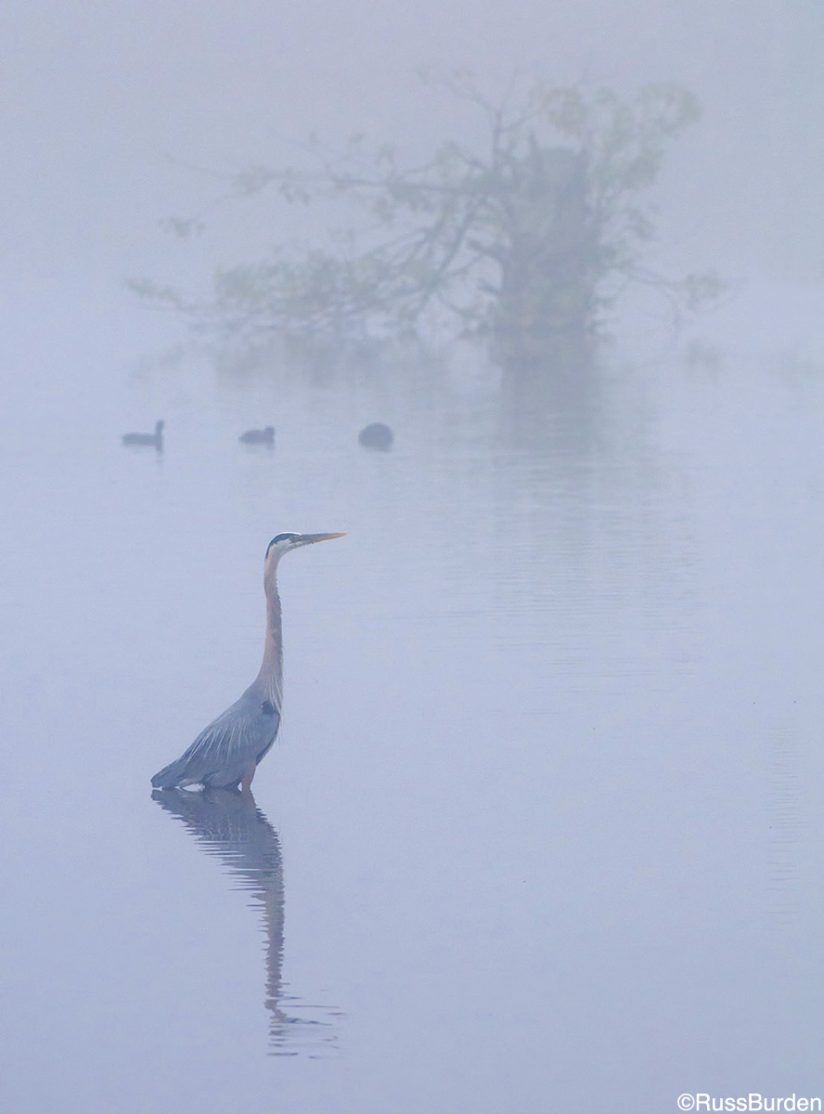
Create Misty Layers
In the image of the great blue heron in the swamp, I was at Viera Wetlands in Florida. The fog that morning was thick. My settings were f/6.3, ISO 400, 1/500th sec. and 400mm focal length. I used a wide aperture so the depth of field would be shallow. My intent was to show layering of the subjects as they gradually receded into the background and fell out of the range of focus. The heron is sharp, the coots fall out of focus and the tree is just a shape in the mist. Had the fog not been heavy, the mood would be totally different. I love the intrigue and mystery.
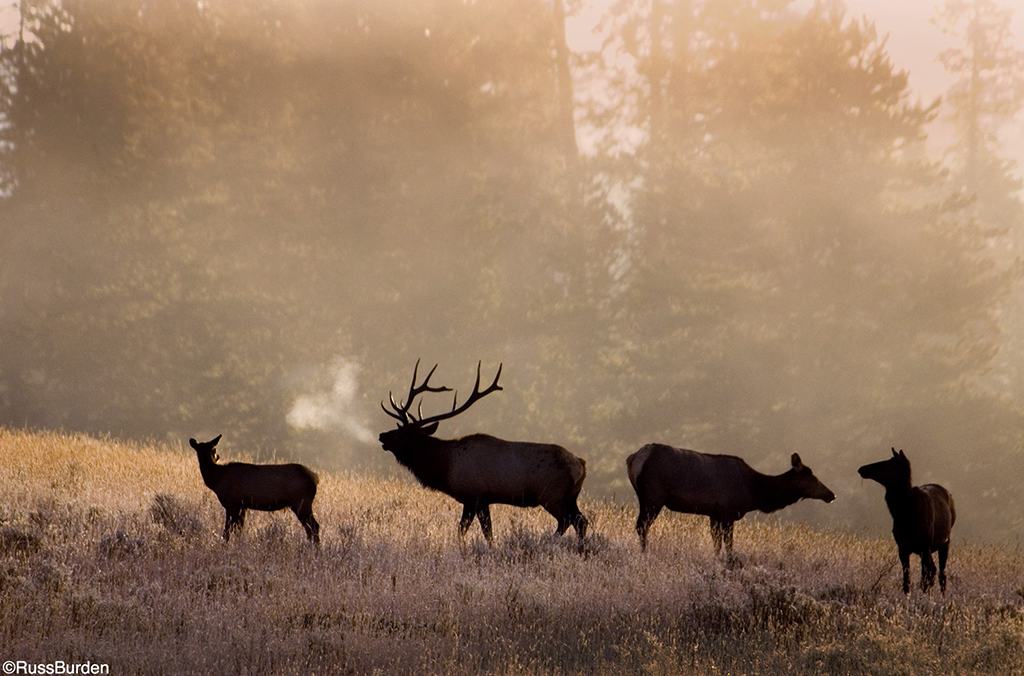
Use Fog To Emphasize Shallow Depth Of Field
Serendipity was on my side as the four elk in the soft mist were on the same plane of focus. This allowed me to use a wide-open aperture at 400mm. Only the elk and surrounding grasses were sharp. The misty trees in the background fell out of focus. As a result, they provided a sense of place but don’t pull the eye away from the animals. I waited for them to separate as it was of great magnitude they didn’t merge. Once again, serendipity fell my way. As soon as the four animals split apart, the bull exhaled and CO2 radiated from his mouth—it was a moment I’ll never forget.
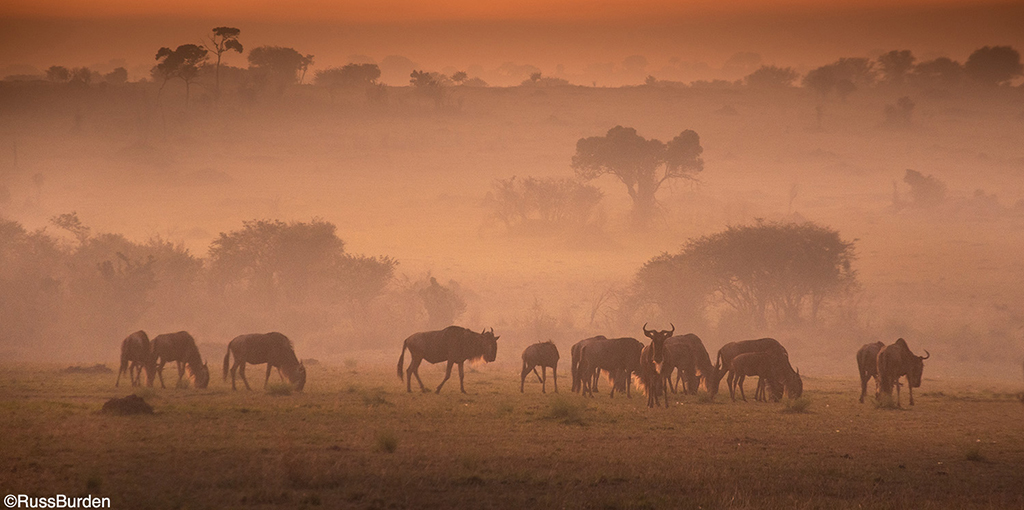
Create A Mood
The photo of the wildebeests in the morning fog uses the same principles as the elk but in reverse. I used a wide focal length lens, which provides a lot of depth of field. I wanted to include the elevated levels of hills with the background mist and wanted all in focus. With the low morning light, I didn’t have the luxury to stop down the aperture. I feared if I used a slow shutter, the moving wildebeests wouldn’t be sharp. I raised the ISO to 800 and shot wide open. I used minus 1 compensation as to not blow out the sky. I knew I could open the foreground shadows in post processing. We don’t often get mist and mood in Tanzania. It was an amazing morning.
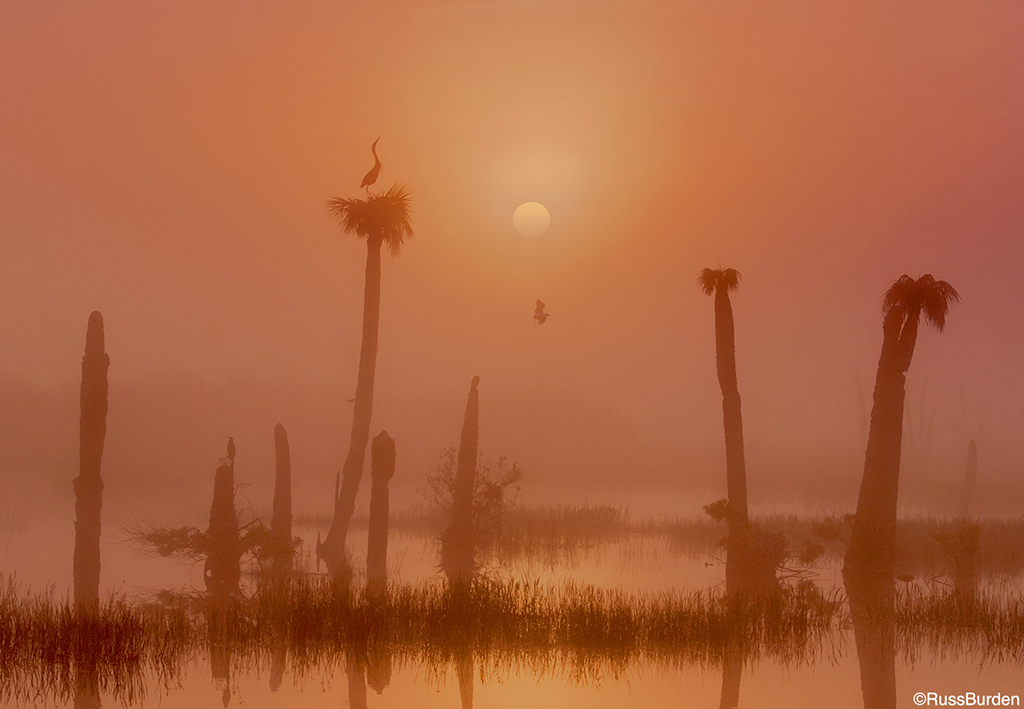
Wait For Behavior
In the image of the heron and palms with the bird in flight, there are similarities to the above photo of the wildebeests but because I had brighter conditions, I was able to use a higher shutter speed. This was essential to capture the bird in flight. From some of the lower palms, birds would fly in the background. When the sun broke free from the fog, I prayed one would take off. Thankfully the photo gods listened. The focal length was 80mm, aperture of f/7.1, ISO 400 and a shutter of 1/1250 sec. Normally, I like to use higher shutter speeds to stop a bird in flight, but because I was using a wider focal length, I was able to get away with a slightly slower speed and still freeze the bird.
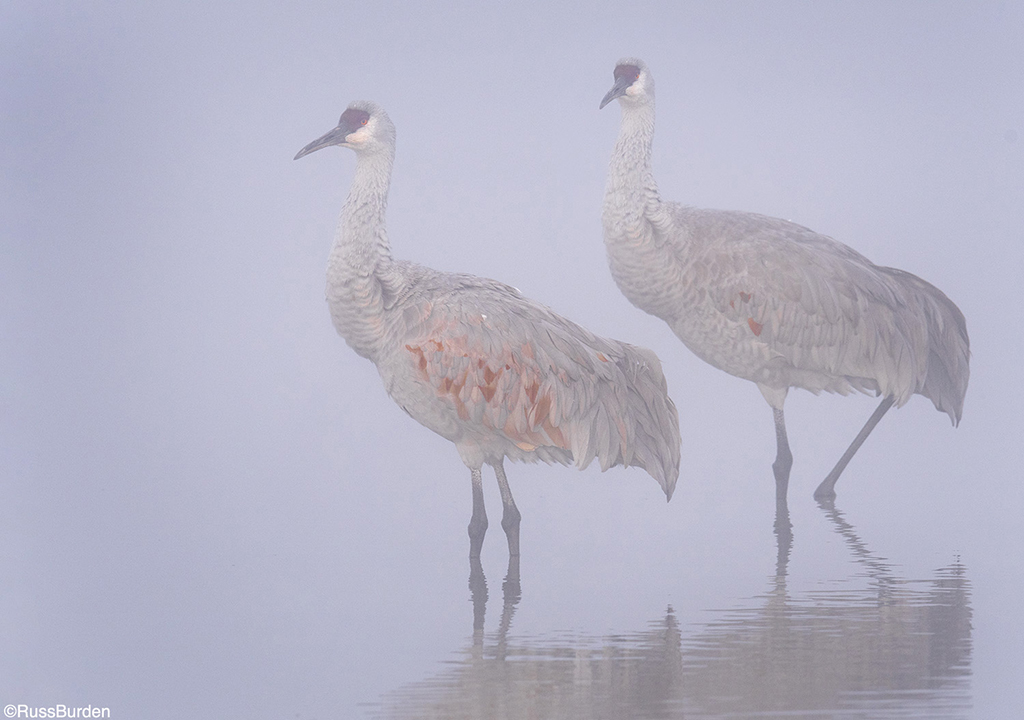
Depth of Field When Needed
In the image of the two sandhills, it was imperative I increase my depth of field. I made the photo with a 600mm lens and the birds were on different focus planes. This demanded I stop down, especially with the very long lens. I set the aperture to ƒ/9, pressed the depth of field preview button and watched the rear crane snap into focus. I gently squeezed the shutter as the speed was only 1/250 sec. With a 600mm, that’s dangerous territory. I’m thankful for my sturdy tripod and gimbal.
If you’ve yet to discover the wonders of making photos in any of the above types of conditions, now is the time to give them a whirl. Check your forecast to see if they’re in your future. Plan a trip to an area known for fog and mist. Either way, it’s time to get your head in the fog and add diversity to your files. You just may wind up getting hooked!
To learn more about this subject, join me on a photo safari to Tanzania. Visit www.russburdenphotography.com to get more information.
The post Wildlife In The Mist appeared first on Outdoor Photographer.












